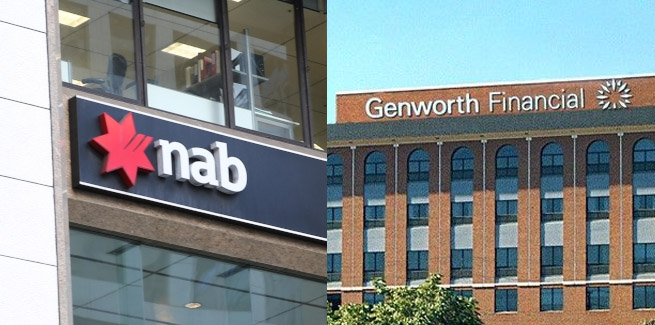Building on similar issues reported by ANZ and Westpac, National Australia Bank (NAB) has reported a marked fall in profit and cash earnings.
NAB’s full-year results (for the year ending September 2020) show that its cash earnings for the financial year 2020 were $3.7 billion, a drop of 36.6 per cent year-on-year.
Excluding large notable items of $1 billion, the group’s cash earnings came to $4.7 billion, down 25.9 per cent on the prior year.
The large notable items include customer-related remediation provision charges (largely due to historic wealth issues, including discontinued operations) and payroll remediation due to both underpayment and overpayment issues dating back 2012.
Net profit from continuing operations came to $3.4 billion, a 40.8 per cent plunge from the year before.
Revenue was down 1.4 per cent to $17.1 billion, while expenses rose by 2 per cent (excluding large notable items) to $7.6 billion.
Mortgage book
The results show that NAB’s total balances of Australian mortgages dropped from $304 billion in September 2020 to $299 billion in September 2020.
Owner-occupiers now account for around 60 per cent of NAB’s mortgages in Australia.
Investor loans dropped from 43.1 per cent in September 2019 to 39.9 per cent in September 2020.
Fixed rates had increased to 22.8 per cent, up from 20.4 per cent.
The bank also noted that its asset quality is starting to deteriorate given economic disruptions caused by COVID-19, with loans that are 90+ days past due ticking up to over 1.00 per cent in FY20.
NAB chief executive Ross McEwan noted the bank had felt the impacts of total forward-looking provisions of $1.8 billion, after the bank added $1 billion in the second half for extra cover around COVID.
“While the outlook remains uncertain, further deterioration is expected, which is why we have added $1,856 million in additional forward-looking collective provisions in FY20,” he said.
“Stronger provisions are the right thing to do but have impacted FY20 cash earnings, which are down 25.9 per cent compared with FY19,” Mr McEwan said.
“In addition, low interest rates and lower fee income contributed to a decline in revenue. While we are acutely aware of the need for disciplined cost management, costs rose in FY20 as we adjusted to the COVID-19 environment and started implementing our strategy refresh announced in April.”
Broker share ticks up
According to the bank, as at September 2020, 37.8 per cent of Australian home loans were written by brokers – up from 36.7 per cent in September 2019.
Similarly, the proportion of loans written by the proprietary channel continues to fall – now hovering around 62.2 per cent.
The major bank also noted that there had been a marked take-up of its digital solutions this year, revealing that approximately 95 per cent of mortgage documents written by the broker channel were executed digitally with e-signatures.
This reportedly saved around 500,000 pages of paper per month and reduced error rates in returned documents by around 15 per cent.
Loan deferrals
Over the financial year ending September 2020, NAB deferred around 110,000 loans. It said that around 75,000 loans had since come off deferral.
Total balances of deferred loans as at September 2020 was $29 billion; however, the major bank said this had dropped to $14 billion (over 34,000 loans) as at 23 October 2020.
Around 5 per cent of deferred customers have been referred to NAB Assist, with Victorian borrowers making up 41 per cent of referrals to this helpline.
Across the segments, personal banking was the division to see a rise in cash earnings, increasing 9.5 per cent to $1.3 billion.
The business and private banking business saw an 11.6 per cent drop to $2.4 billion, while corporate and institutional banking fell by 2.6 per cent to $1.4 billion and the New Zealand bank declined by 1.8 per cent to $1 billion.
Looking forward, Mr McEwan pointed to the stimulus for households and businesses in the federal budget, which, combined with a reopening of the state borders, will provide a bridge to economic recovery.
The final dividend came to 30¢ per share, making the full-year payout 60¢, in contrast to last year’s $1.66.
 ;
;